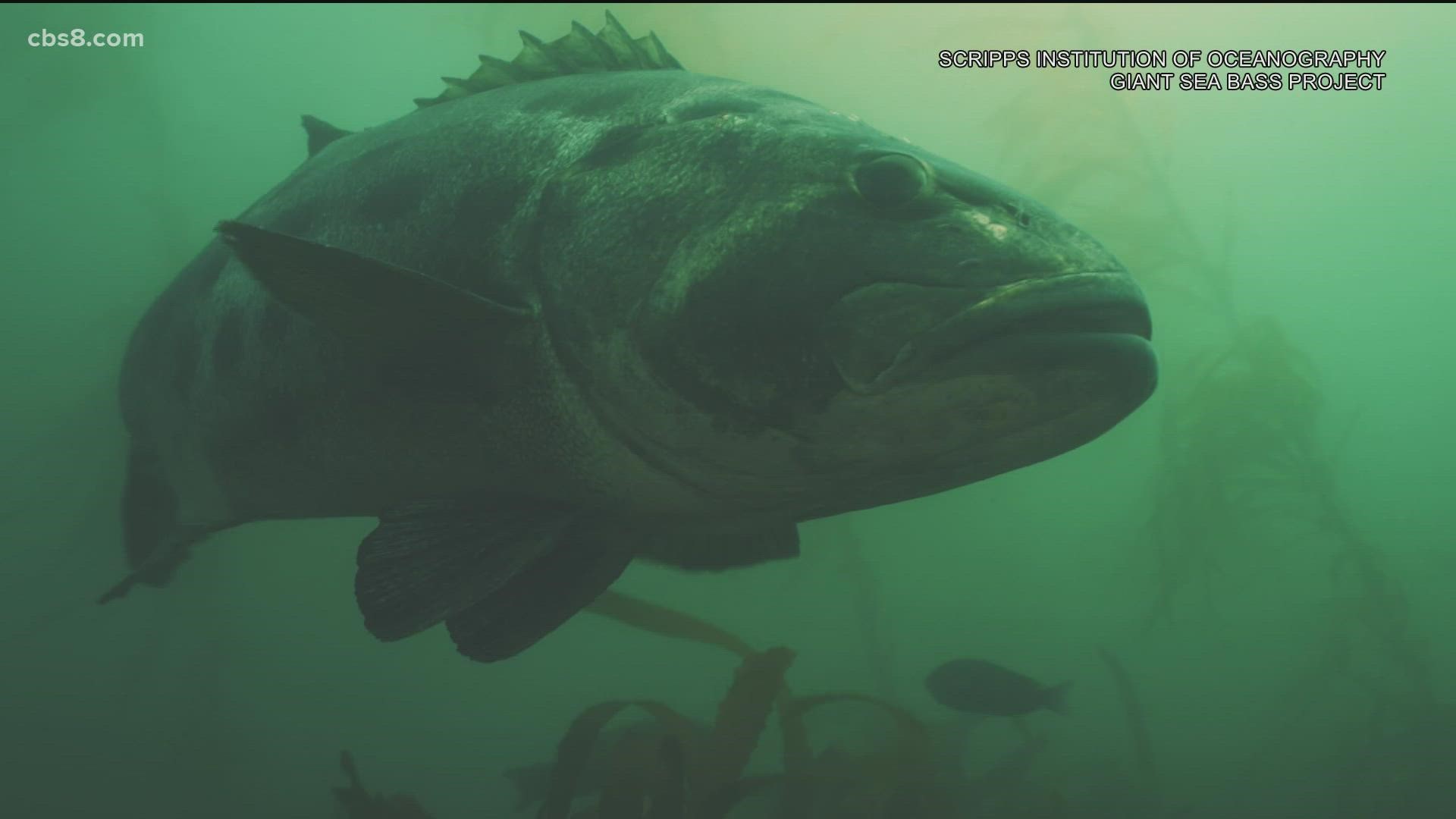SAN DIEGO COUNTY, Calif. — The giant sea bass has been critically endangered for decades, but a San Diego researcher is discovering that there’s a lot we may not know yet about the population.
They can grow to be the length of a smart car, up to nearly 9 feet, and weigh up to 560 pounds, and can live for more than 75 years - the giant sea bass is quite a remarkable fish. It’s a fish that has captured the inquisitive mind of Arturo Ramirez with Scripps Institution of Oceanography.
“I study fish, and this is the largest most iconic fish we have on this coast," he said.
Ramirez has now dedicated his research to learning about the fish that’s been categorized as critically endangered due to overfishing in the early 1900s. His passion really started when he was out scuba diving in La Jolla back in 2016.
“I was just diving and I saw this large fish," he said. "I couldn’t believe the fish stuck with us the entire dive, we enjoyed it.”
This fish has been protected from fishing in the U.S. since 1981. But there’s not much research on them in Mexico and virtually no regulation there.
"We were lacking all kinds of data from Mexico," said Ramirez.
Something he discovered during his many trips to Baja California. He was surprised to see the giant sea bass for sale at fish markets in Mexico. And the fishermen were willing to offer him more. He tried to reach out to a network of researchers on both sides of the border, but there was nothing from the government or scientists. So, he’s now crossing the border regularly speaking directly with fishermen.
“[I say] 'tell me everything how often and how much [are] you selling?'”
The good news is it seems there are more giant sea bass in Mexico than initially thought. And about 73% of the population is likely south of our border in La Paz, Los Cabos, and the Gulf of California then extending up Baja and into California. They’ve been seen around San Diego, the Channel Islands, and as far north as Humboldt County.
It’s those sightings Ramirez relies on to determine the best regulations to keep this fish alive and reproducing which is why getting more info from Mexico is so important.
In his lab in La Jolla, he has several samples of ear bones or otoliths, which help in learning their history.
“We can see many rings, probably this fish was older than 40 years and you would count this way," said Ramirez.
Just like counting the rings on trees, they count the rings on giant sea bass' ear bones. And in this case, when the rings are smaller or lighter it represents a tough season when they were not growing or eating as much.
Ramirez also has a sample of a female fish’s reproductive organ that reveals how many babies they have.
“But also [reveals] when they reproduce, and this is crucial because one of the most successful fishery regulations is to close fishery when they are reproducing," he said.
All of the information could unravel the mystery of this fish’s population.
Ramirez believes the giant sea bass is a good ambassador to get more people interested in cross-border research and regulations. Because he suspects this isn’t the only fish that’s misrepresented.

